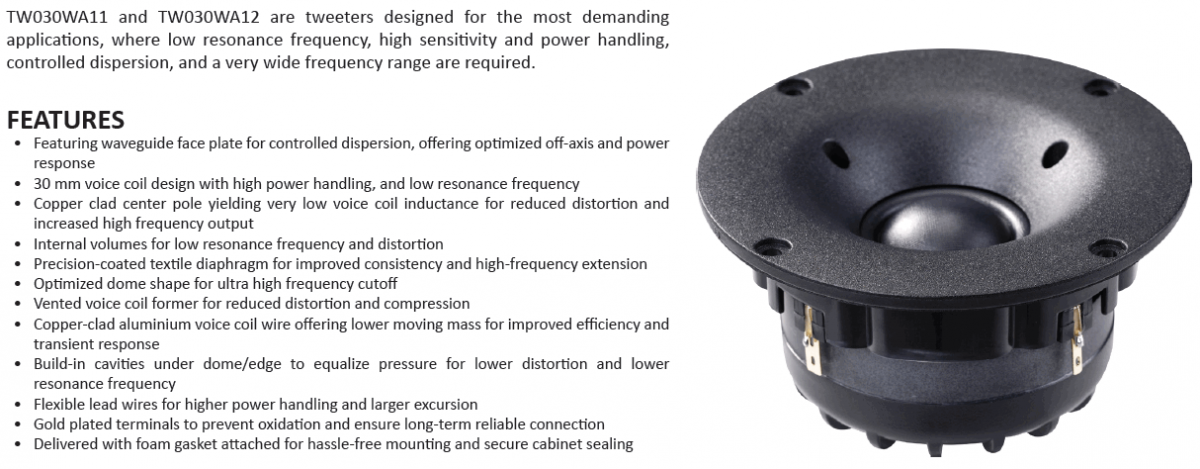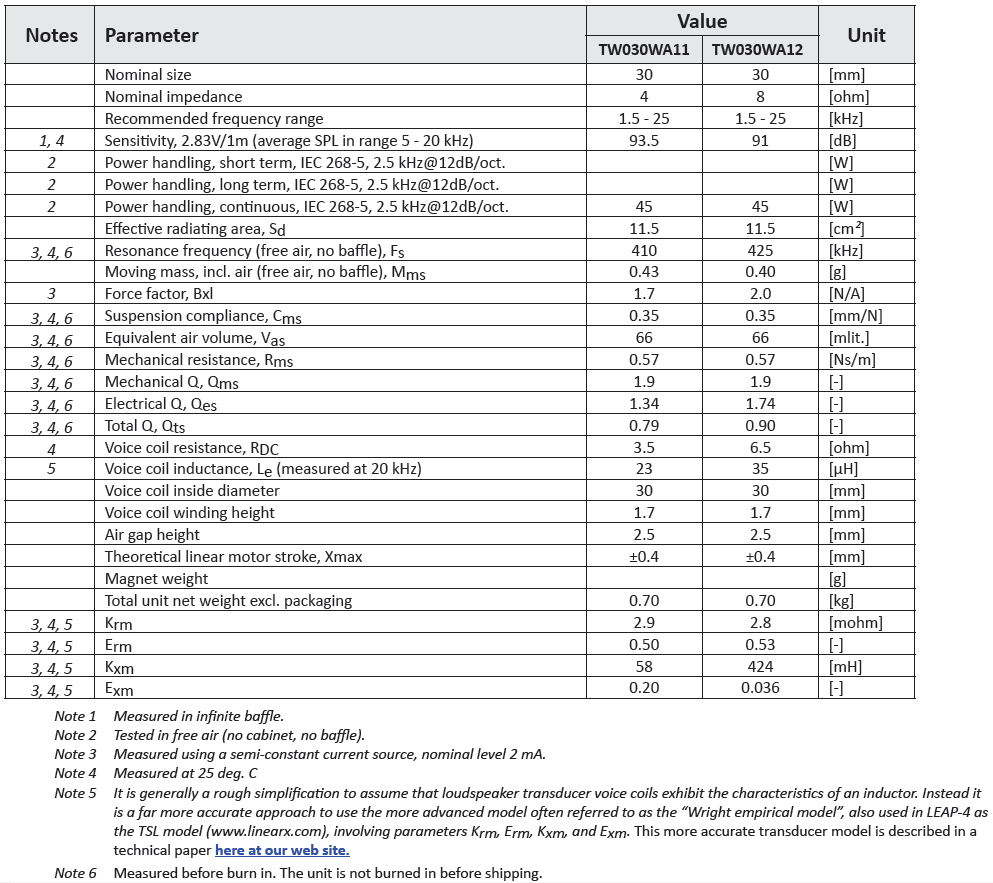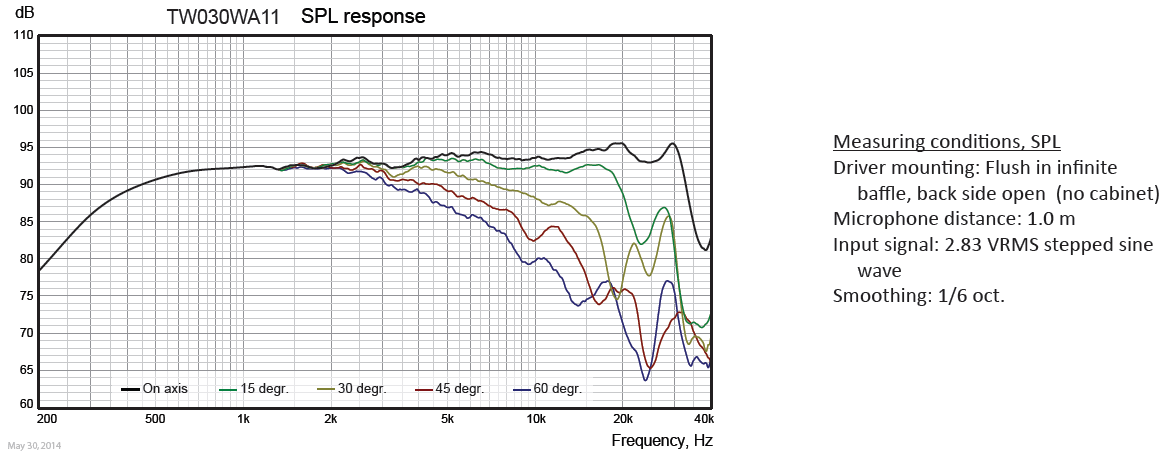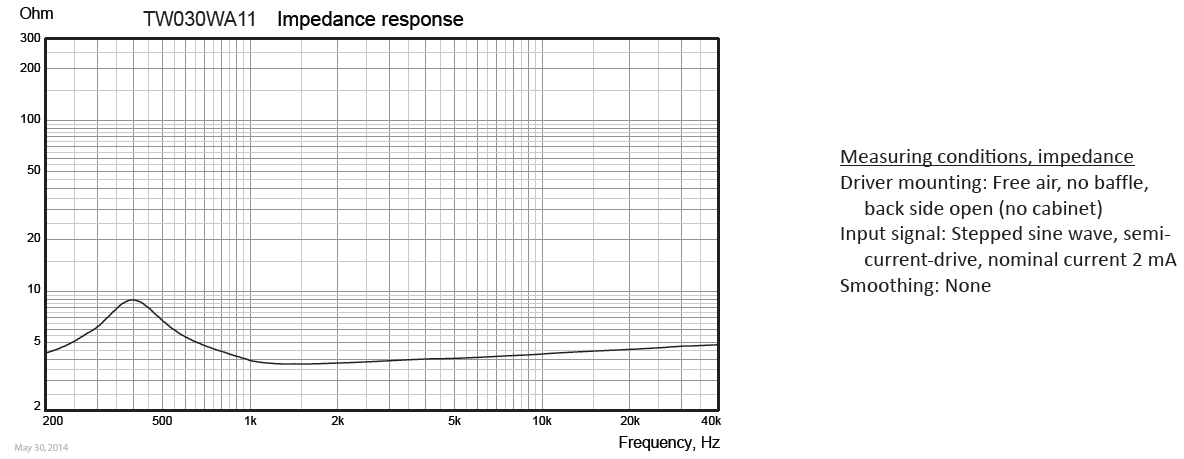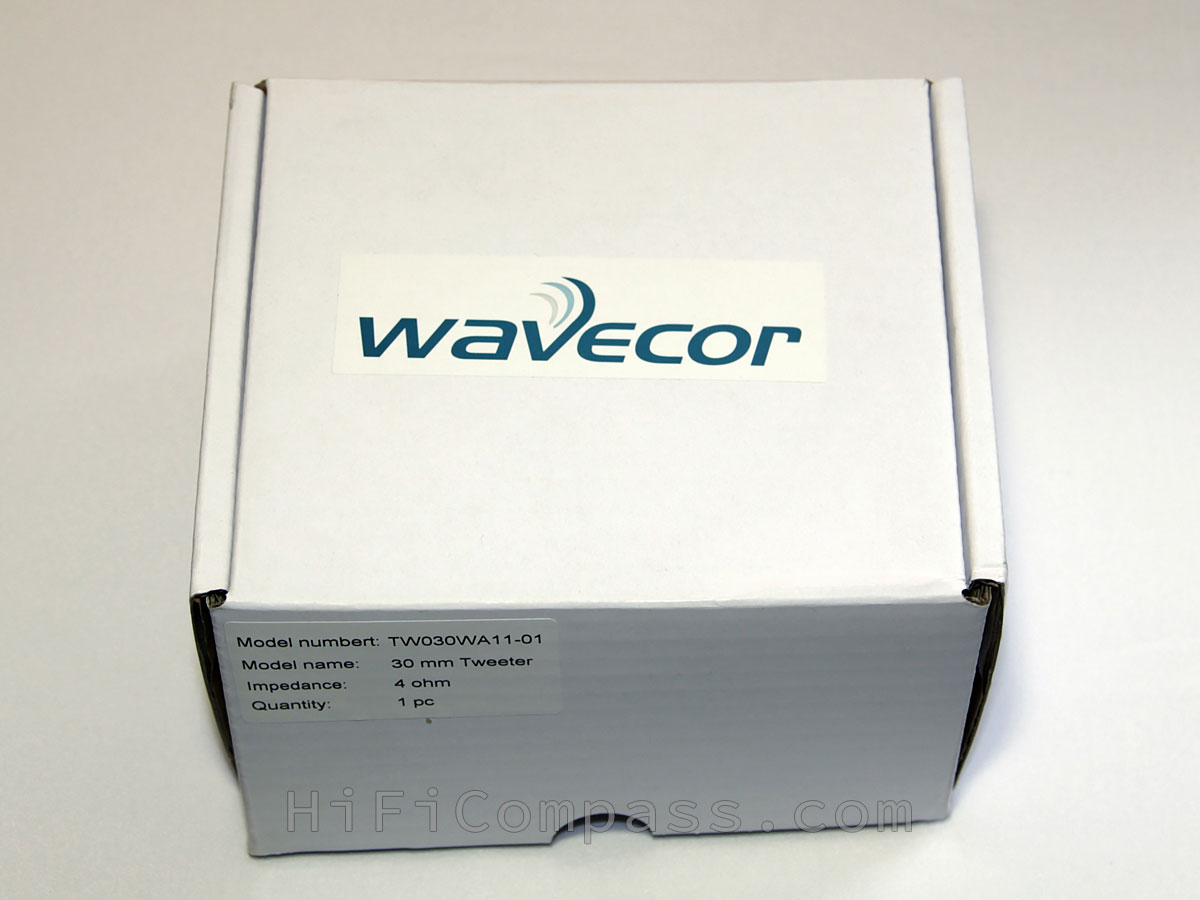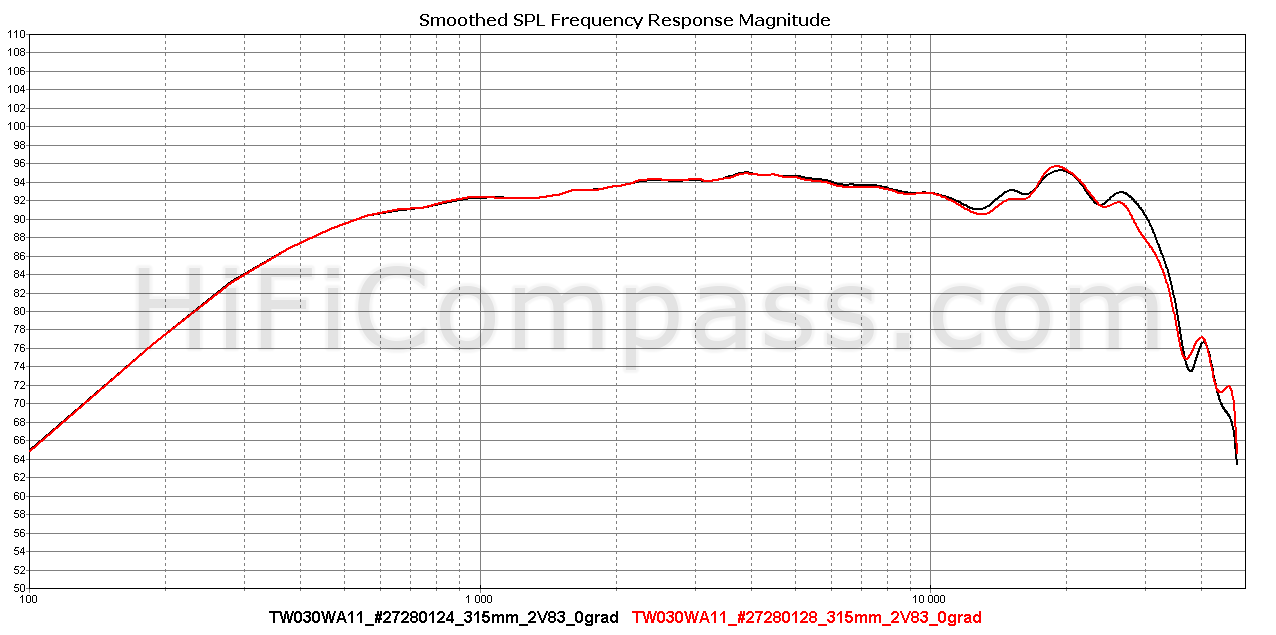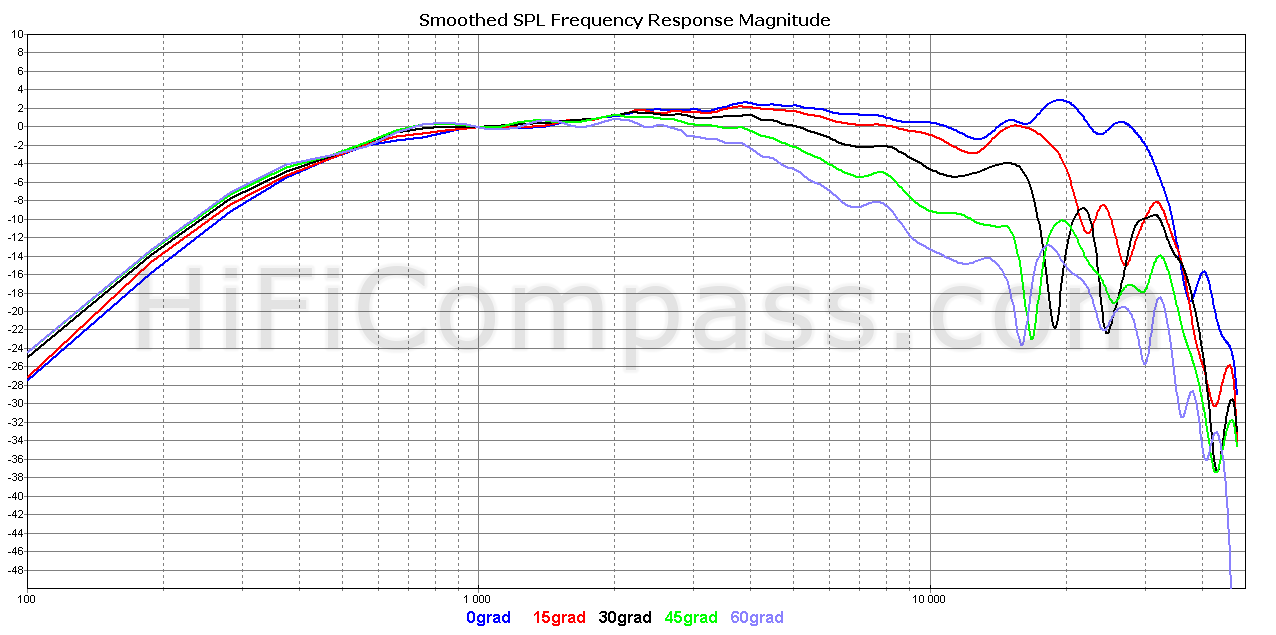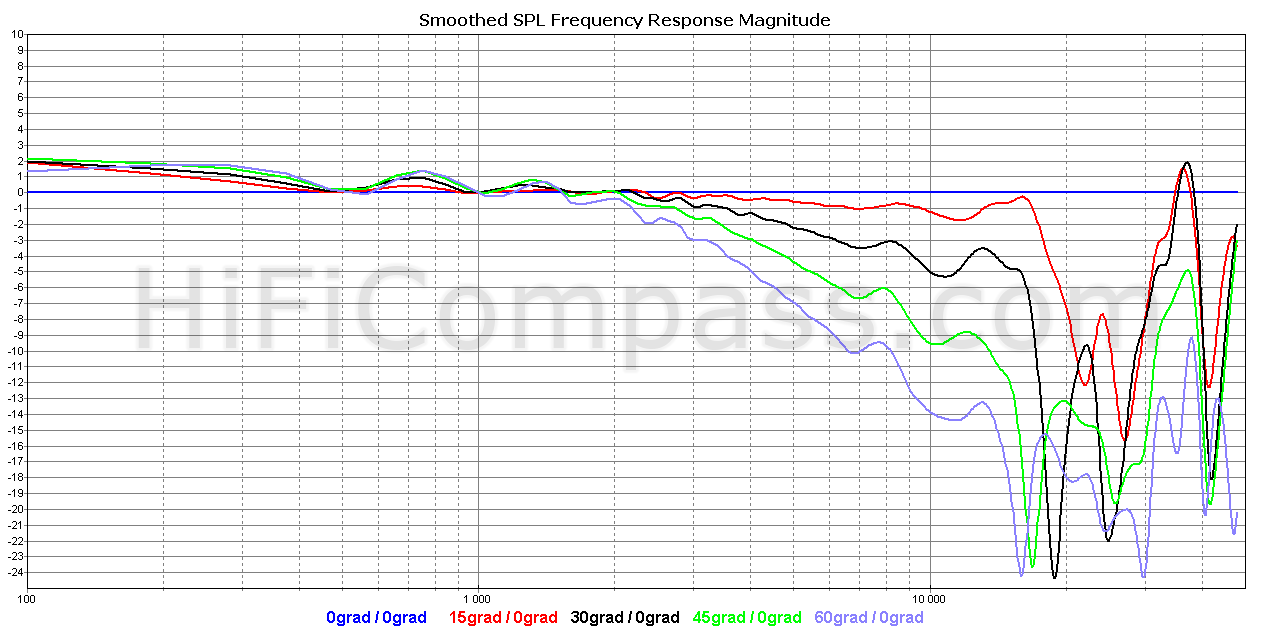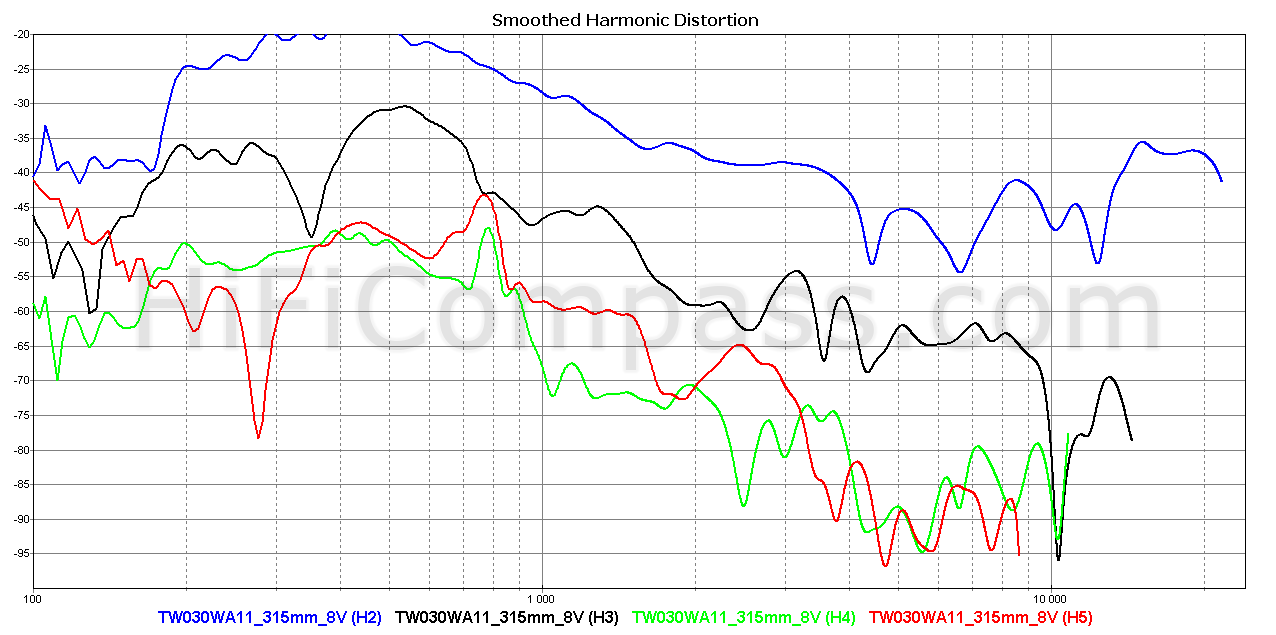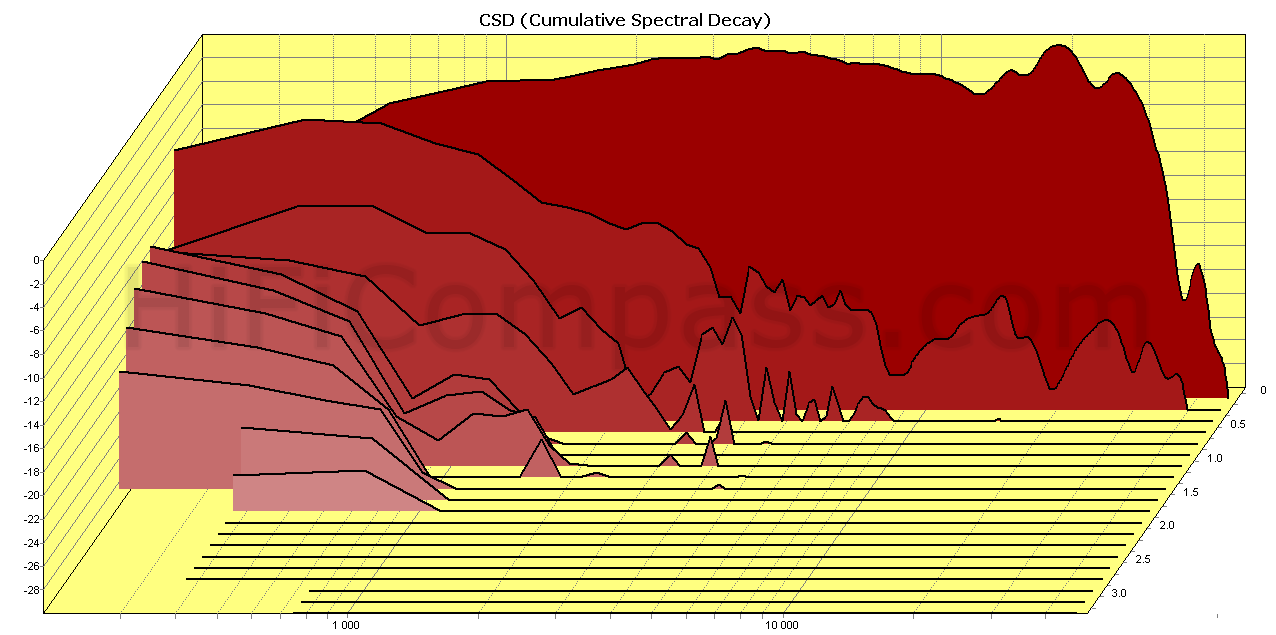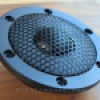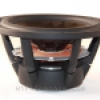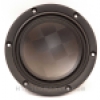HiFiCompass
Wavecor TW030WA11 Fabric Dome tweeter
What is on the test bench?
Today we are testing TW030WA11 tweeter - one of flagman high frequency range models of the Wavecor company.
TW030WA11 it is a 4 Ohm speaker (its 8 Ohm version is TW030WA12) featuring a quite large fabric dome membrane with a diameter of 30 mm, ferrite magnet motor and waveguide loading for controlling sound dispersion. From unusual features it should be noted an extremely low resonance frequency - 410 Hz, very a few tweeters of this size on the market can boast with such figure.
You can get familiar with the Wavecor company history here.
Why do we test this?
The speakers of the Wavecor company have been long attracting our attention with its construction, innovate technologies, Danish roots and quite flattering feedback from consumers. However, for some reasons they couldn't reach us. At last, at the Munich exhibition Hi-End Show 2018 we had the opportunity to personally meet at the Wavecor stand with Allan Isaksen, the general manager of the company, and got to touch to the significant part of the Wavecor speaker model range. Allan Isaksen made us the impression of a business and punctual person and kindly agreed to provide several models for independent testing, for what we express our gratitude to him.
What did the manufacturer state?
We are opening the "passport" and carefully studying:
The first to note is a perfectly designed document - a triffle but very pleasurably. We think, taking in account fullness of information, design and convenience of displaying graphic information (correctly selected scales of axes), the Wavecor's datasheets could be serve as a reference for other companies . As many loudspeaker designers, seeking for speaker drivers for their projects, are orienting, first of all, on the official datasheet, then they will not be disappointed here.
There is nothing to comment here, the manufacturer's words say for itself.
Of numerical parameters especially should be noted the declaring of additional parameters as Krm, Erm, Kxm and Exm for advanced TSL speaker driver model, that give an oportunity to designers to model a tweeter operation much more precisely. The resonance frequency is remarkably low - 410 Hz and in conjunction with Qts=0.79 it gives very extended frequency response in low end - down to 500 Hz by the -3 dB level. Sure, nobody should use a tweeter to a such low frequency but an extended low end helps in joining the tweeter with lower band speaker. This tweeter has the lowest resonance frequency of all tweeters we had to deal with before this moment!
Visual inspection
Each tweeter has an individual part number. The tweeters having "-01" suffix in the part number are supplied each in an individual box. Each tweeter has an individual part number.The box of dense cardboard with formatted inserts made of foamed polyethylene provides very reliable transportation.
We should note absolutely perfect manufacturing quality of the product - no mechanical defects, no scratches, no chips on ferrite magnet, no burrs, perfectly glued label, perfectly aligned foam gasket (what is not always happens in much more expensive tweeters!). Nothing bends and does not creak, the tweeter is felt in the hands, as a single monolithic product. The front flange has a fine texturing and is made of a very hard and strong plastic. The plastic is so durable that the question immediately arises - should it necessarily be metallic? Exactly not in this construction. The screws that fix the waveguide are deeply recessed.
From back side we can see a massive back cover made of same material as the front wavegude. Due to plenty of thick ribs the cover is so solid that it seems it made of metal. Perhaps it is the best plastic back cover we have seen. The measured mounting flange diameter and thickness are turned out to be exactly the same as in the datasheet, therefore, you can safely trust to datasheet mechanical drawings.
The terminals are gold-plated but slightly clunky. If you plan to connect to them using soldering, then there are no problems, but with knife terminals you need to be more careful.
The ideal quality of manufacturing testifies to a very high production culture and a serious attitude of the company to the quality of its products.
Impedance frequency response
You can see impedance frequency responses for two samples and it is remarkably - the tweeters are delivered by the piece, not a matched pairs, but the curves lie each on other so way we can't see one behind the another. The measured resonance frequencies are - 395 and 403 Hz - even lower than declared, and Qts - 0.74 very close to the datasheet value too. Excellent consistency! The impedance curves are very smooth without any signs of parasitic resonances in the whole frequency range. The low impedance increasing with frequency indicates a very good motor with short-circuiting rings inside the magnetic system.
On-axis frequency response
The measured on-axis magnitude frequency response differs from the datasheet's one. The response from the datasheet is slightly wriggling, but monotonously goes up with an increase in frequency, while in the measured one there is a smooth rise in the range from 2 to 6 kHz, then slight dip in the range around 13 kHz and climbing at 19 khz. In general, the SPL frequency response is fairly smooth and the deviation of the mean value in the 550 Hz - 28 kHz range does not exceed a plus/minus 3 dB, what is a common valuer for a fabric dome tweeter. The measured average sensitivity is about 93.5 dB the same as in the datasheet.
The very extended and smooth frequency response suggests a simple dealing with tweeter when designing a crossover.
Off-axis frequency responses
The off-axis responses behavior demonstrates a uniform and smooth decrease with increasing angle of deviation from the main axis and well agrees with those ones from the specification. The responses decay at large angles and high frequencies is quite tangible what is very typically for soft domes of that size. The curves falling is uniform and monotonous, it starts of lower frequencies in comparing with no-waveguide tweeters. It means a better control over sound dispersion because there is a less difference between off-axis levels at low and high regions of the tweeter frequency range.
Harmonic distortion (315 mm)
The two above diagrams are for the averaged SPL about 93.5 and 102.5 dB and we can characterize the nonlinear distortion as "very low". The distortion level gives a possibility to this tweeter to operate down to 1.5 kHz in loudspeakers without any problems. Bravo, excellent performance!
Step response
The step response demonstrates an excellent slew rate due to the very extended top end, and a rapid and smooth decay. Return to the resting state is not so fast, crossing the rest line a couple of times - a consequence of the low resonance frequency. The teeth in the falling part of the curve are determined by the features of the measuring system and in this case are not related to the tweeter.
Waterfall
The waterfall diagram shows a good rapid decay of the transient process in the absence of any parasitic resonances. Very nice!
Listening impressions
We can tell about our listening impressions only after testing the tweeter in real loudspeakers. Since we have not yet reached this point, we will leave this report for later.
This section will be updated after a real test in loudspeakers.
"How to use" recomendations
We can safely recommend to use these tweeters in two and three-way speakers in the frequency range even from 1.5 kHz and higher. Measurements of nonlinear distortions confirm the validity of our recommendation.
What is price and where to purchase?
The average retail price of TW030WA11 tweeter is about 75 EURO (VAT not included).
https://www.hifibau.de/1491/30-mm-wavecor-hochtoener-tw030wa11
https://www.lautsprecher-berlin-shop.de/Wavecor-TW030WA11
https://www.costruireaudio.com/en/wavecor-tw030wa11-tweeter-4-ohm-30-mm-...
https://www.costruireaudio.com/en/wavecor-tw022wa05-tweeter-4-ohm-22-mm....
https://www.eltim.eu/index.php?item=wavecor-tw030wa11--30mm-tweeter--fab...
https://solen.ca/products/speakers/home-speakers/tweeters/tw030wa11/
https://audio-hi.fi/ru/wavecor_tw030wa11-01-p-982.html
Summary
It can be summarized that the testing confirmed the very close correspondence of the measured parameters with the claimed ones, except for the frequency response. The tweeters have the following features:
- high sensitivity
- smooth and extended frequency response
- some control over sound dispersion
- very-very low nonlinear distortion
- very low resonance frequency
- can operate down to 1.5 kHz
- perfect manufacturing quality and parameters consistency
You can find more measurements of this tweeter here.
One more test (8 Ohm version) from Vance Dickason - https://www.audioxpress.com/article/Test-Bench-Wavecor-TW030WA12-30-mm-Cloth-Waveguide-Loaded-Tweeter
Yevgeniy Kozhushko/29.07.2018
CONTACTS
- Ukraine
- (+380) 95 904 7827
- hificompass@gmail.com
LAST NEWS
-
27 Mar 2025
-
04 Mar 2025
-
25 Feb 2025
-
10 Feb 2025
